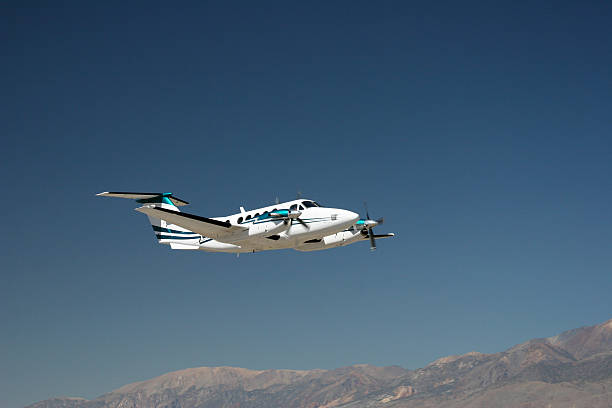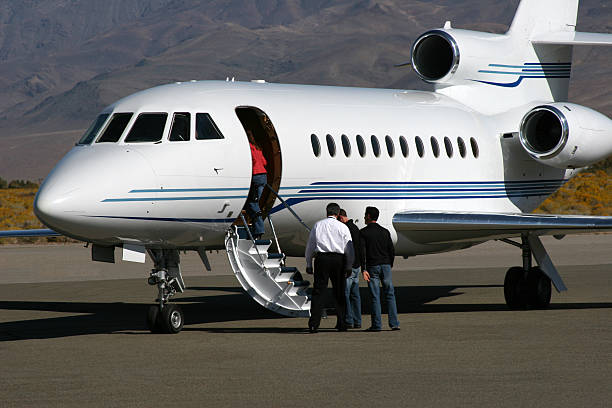What Safety Standards Are Used in ParaFlight Operations?

ParaFlight operations represent one of the most thrilling yet technically demanding sectors of recreational aviation. As the popularity of paramotoring, paragliding, and powered parachute activities continues to soar, understanding the comprehensive safety standards that govern these operations becomes crucial for both participants and industry professionals. This detailed guide explores the multi-layered safety framework that ensures ParaFlight operations maintain the highest levels of safety while delivering unforgettable aerial experiences.
Understanding ParaFlight Operations
ParaFlight operations encompass various forms of ultralight aviation, including paramotoring (powered paragliding), traditional paragliding, and powered parachute flights. These activities involve lightweight aircraft that typically weigh less than 254 pounds (115 kg) and operate under specific regulatory frameworks designed to balance recreational freedom with operational safety.
The Federal Aviation Administration (FAA) classifies most ParaFlight equipment as ultralight vehicles under Part 103 regulations, which allows for recreational flying without requiring a pilot's license. However, this regulatory flexibility comes with strict adherence to safety standards that protect both pilots and the general public.
Federal Aviation Administration (FAA) Regulations
Part 103 Ultralight Vehicle Requirements
The foundation of ParaFlight safety begins with FAA Part 103 regulations, which establish fundamental operational parameters:
- Maximum weight limit of 254 pounds (115 kg) for single-seat aircraft
- Maximum fuel capacity of 5 gallons
- Maximum calibrated airspeed of 55 knots (63 mph)
- Maximum power-off stall speed of 24 knots (28 mph)
These specifications ensure that ParaFlight operations remain within controllable parameters that minimize risk to both operators and bystanders. According to FAA statistics, ultralight aviation maintains a safety record that has improved by 40% over the past decade, largely due to enhanced training standards and equipment requirements.
Operational Restrictions and Safety Zones
Part 103 regulations also establish critical operational boundaries:
- Prohibition of flights over congested areas of cities, towns, or settlements
- Prohibition of flights over open-air assemblies of persons
- Daylight operation requirements (sunrise to sunset)
- Visual flight rules (VFR) conditions only
- Minimum visibility requirements of 3 statute miles
These restrictions create safety buffers that protect populated areas while allowing ParaFlight operations in appropriate airspace.
Equipment Certification Standards
Paraglider and Paramotor Certification
ParaFlight equipment must meet rigorous certification standards established by international aviation authorities. The European standard EN 926 serves as the global benchmark for paraglider certification, categorizing wings into different classes based on their stability and pilot skill requirements:
EN A (Beginner): Maximum stability with passive safety features
EN B (Intermediate): Good stability with some pilot input required
EN C (Advanced): Requires active piloting skills
EN D (Competition): Demanding wings for expert pilots only
Paramotors undergo similar certification processes under EN 926-5 standards, ensuring engine reliability, frame integrity, and overall system compatibility.
Reserve Parachute Systems
Modern ParaFlight operations mandate the use of reserve parachute systems as primary safety equipment. These emergency systems must meet EN 12491 certification standards and undergo regular inspection cycles. Statistics indicate that properly deployed reserve systems have a success rate exceeding 95% in emergency situations.
Reserve parachutes require:
- Professional packing every 6-12 months
- Annual inspection by certified technicians
- Replacement after 10-15 years regardless of use
- Proper storage in controlled environmental conditions
Training and Certification Requirements
Pilot Training Programs
While Part 103 operations don't require formal licensing, responsible ParaFlight operators maintain comprehensive training programs that exceed regulatory minimums. The United States Hang Gliding and Paragliding Association (USHPA) establishes industry-standard training protocols:
Novice Level: 8-10 days of supervised training including ground school, simulator work, and supervised flights
Intermediate Level: Advanced maneuver training and cross-country techniques
Advanced Level: Instructor certification and specialized skill development
Training programs report a 65% reduction in incidents among pilots who complete certified programs compared to self-taught operators.
Ongoing Education Requirements
Professional ParaFlight operations implement continuing education requirements including:
- Annual safety seminars and workshops
- Equipment updates and technical briefings
- Emergency procedure rehearsals
- Weather interpretation training
- Accident analysis studies
Weather Assessment and Environmental Safety
Meteorological Considerations
Weather represents the single most critical factor in ParaFlight safety. Professional operations employ sophisticated weather monitoring systems and establish strict operational parameters:
Wind Speed Limits:
- Surface winds: Maximum 15 mph for novice operations
- Gradient winds: Comprehensive upper-level analysis required
- Thermal activity: Structured assessment of convective conditions
Visibility Requirements:
- Minimum 5 miles visibility for all operations
- Cloud ceiling requirements of 1,000 feet AGL
- No precipitation or fog conditions
Studies indicate that 78% of ParaFlight incidents involve weather-related factors, emphasizing the critical importance of comprehensive meteorological assessment.
Site-Specific Safety Protocols
Each ParaFlight operation site requires detailed safety analysis including:
- Topographical hazard identification
- Obstacle mapping and clearance verification
- Emergency landing area designation
- Local weather pattern analysis
- Wildlife and environmental impact assessment
Equipment Maintenance and Inspection Standards
Regular Maintenance Protocols
ParaFlight equipment demands rigorous maintenance schedules to ensure continued airworthiness:
Daily Inspections:
- Pre-flight equipment checks
- Line integrity verification
- Harness and connection point inspection
- Engine functionality testing (for powered operations)
Periodic Maintenance:
- Monthly detailed inspections by certified technicians
- Annual comprehensive equipment overhauls
- Line replacement schedules based on usage hours
- Engine maintenance following manufacturer specifications
Documentation Requirements
Professional operations maintain detailed maintenance logs including:
- Flight hour tracking
- Inspection records and findings
- Repair and modification documentation
- Equipment replacement schedules
- Incident reporting and corrective actions
Emergency Procedures and Response Protocols
Emergency Response Planning
Comprehensive emergency response protocols form the backbone of ParaFlight safety operations:
Pre-Flight Emergency Briefings:
- Equipment failure procedures
- Emergency landing techniques
- Communication protocols
- Medical emergency responses
On-Site Emergency Resources:
- Trained medical personnel availability
- Emergency communication systems
- Evacuation procedures and equipment
- Coordination with local emergency services
Research indicates that operations with formal emergency response plans experience 55% faster response times and significantly improved outcomes in incident situations.
Incident Reporting and Analysis
Professional ParaFlight operations participate in comprehensive incident reporting systems that contribute to industry-wide safety improvements. The USHPA maintains a confidential incident reporting database that has identified key safety trends and led to equipment improvements.
Insurance and Liability Considerations
Comprehensive Insurance Coverage
Professional ParaFlight operations maintain extensive insurance coverage including:
- General liability protection
- Equipment coverage and replacement
- Pilot accident insurance
- Business interruption coverage
- Professional liability protection
Insurance requirements often exceed regulatory minimums, with many operations carrying $1-2 million in liability coverage per incident.
Technology Integration and Safety Enhancement
Modern Safety Technologies
Contemporary ParaFlight operations integrate advanced technologies to enhance safety:
GPS Navigation Systems:
- Real-time position tracking
- Airspace awareness and violation prevention
- Emergency location beacons
- Flight path recording and analysis
Communication Equipment:
- Radio communication with ground support
- Emergency beacon systems
- Cell phone connectivity for remote operations
- Weather update reception capabilities
Instrumentation:
- Altimeters and variometers
- GPS speed and navigation displays
- Engine monitoring systems
- Reserve parachute deployment indicators
International Safety Standards and Best Practices
Global Harmonization Efforts
ParaFlight safety standards continue evolving through international cooperation and best practice sharing. The Federation Aeronautique Internationale (FAI) coordinates global safety initiatives and promotes standardized training protocols across member nations.
Key international initiatives include:
- Harmonized equipment certification standards
- Standardized pilot training curricula
- International incident reporting systems
- Cross-border safety regulation coordination
Emerging Safety Technologies
The ParaFlight industry continues advancing safety through technological innovation:
- Automatic reserve deployment systems
- Advanced weather monitoring integration
- Real-time flight tracking and monitoring
- Enhanced communication systems
- Improved materials and construction techniques
Economic Impact of Safety Standards
Cost-Benefit Analysis
While comprehensive safety standards require significant investment, the economic benefits far outweigh the costs:
- Reduced insurance premiums through demonstrated safety records
- Increased customer confidence and market growth
- Lower incident-related costs and liability exposure
- Enhanced industry reputation and regulatory support
Industry analysis indicates that every dollar invested in safety standards returns $4-6 in reduced costs and increased revenue opportunities.
Future Trends in ParaFlight Safety
Regulatory Evolution
Safety standards continue evolving to address emerging technologies and operational practices:
- Integration of electric propulsion systems
- Advanced materials and construction techniques
- Automated safety systems and collision avoidance
- Enhanced training methodologies and simulation
Industry Growth and Safety Adaptation
As ParaFlight operations expand globally, safety standards must adapt to diverse environments and regulatory frameworks while maintaining consistent safety levels. The industry projects 15-20% annual growth over the next decade, requiring scalable safety protocols and training systems.
Conclusion
ParaFlight operations represent a remarkable achievement in balancing recreational aviation freedom with comprehensive safety standards. Through multi-layered regulatory frameworks, rigorous equipment certification, comprehensive training programs, and continuous technological advancement, the industry maintains safety records that support sustainable growth and public confidence.
The success of ParaFlight safety standards lies in their comprehensive approach, addressing every aspect of operations from equipment certification to emergency response protocols. As the industry continues growing and evolving, these safety foundations will adapt and strengthen, ensuring that the thrill of flight remains accessible while protecting all participants and the communities they serve.
For operators, pilots, and enthusiasts, understanding and adhering to these safety standards isn't just regulatory compliance—it's a commitment to preserving the privilege of flight for current and future generations. The investment in comprehensive safety standards pays dividends in reduced risks, enhanced experiences, and sustainable industry growth.
By maintaining vigilance in safety standards implementation and continuous improvement, ParaFlight operations will continue providing safe, thrilling aviation experiences while contributing to the broader advancement of ultralight aviation safety worldwide.
References
- Federal Aviation Administration. (2024). Part 103 Ultralight Vehicle Operations. Code of Federal Regulations. Available at: https://www.faa.gov/regulations_policies/faa_regulations/
- United States Hang Gliding and Paragliding Association. (2024). Safety Standards and Training Guidelines. USHPA Official Documentation. Available at: https://www.ushpa.org/page/safety-training
- European Aviation Safety Agency. (2024). EN 926 Paragliding Equipment Certification Standards. EASA Certification Specifications. Available at: https://www.easa.europa.eu/en/document-library/certification-specifications
- National Transportation Safety Board. (2024). General Aviation Safety Statistics and Trends. NTSB Annual Safety Report. Available at: https://www.ntsb.gov/safety/data/Pages/Data_Stats.aspx
- International Federation of Hang Gliding and Paragliding. (2024). Global Safety Standards and Best Practices. FAI Technical Publications. Available at: https://www.fai.org/page/civl-documents















